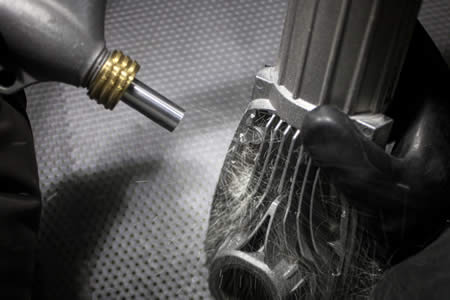Shot peening is a cold work process used to impart compressive residual stresses onto the surface of a component, which results in modified mechanical properties. The shot peening process is used to add strength and reduce the stress profile of components.
How Does Shot Peening Work?
Shot peening works by striking a surface with a shot with enough force to generate plastic deformation. When a group of shots impacts the surface they create multiple indentations, resulting in the component being encased by a compressive-stressed layer on the metal surface.
The Purpose of Shot Peening?
The main benefit of shot peening is to lengthen the service life of a component by creating an induced compressive stress layer to increase resistance to fatigue, while also helping to resist the development and propagation of cracks.
Stress corrosion cracking is also mitigated internally as the plastic deformation caused by the various types of shot peening and laser peening aids tensile stressed parts from the inside. However, tensile stresses inside a material are not as problematic, as surface cracks are less likely to start on the inside of a material.
The Benefits of Shot Peening?
The advantages of shot peening include improved strength and fatigue resistance, even when processing complex geometric parts. The process is well-known and relatively inexpensive and has substantial research and quality controls to ensure its effectiveness. In addition, the media and equipment are readily available.
Aside from improving material characteristics, shot peening can produce a pebbly surface that can be advantageous in certain applications.

